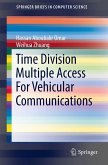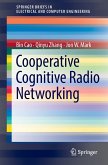This brief presents a unified analytical framework for the evaluation of drive-thru Internet performance and accordingly proposes an optimal spatial access control management approach. A comprehensive overview and in-depth discussion of the research literature is included. It summarizes the main concepts and methods, and highlights future research directions. The brief also introduces a novel cooperative vehicular communication framework together with a delicate linear cluster formation scheme and low-delay content forwarding approach to provide a flexible and efficient vehicular content distribution in the drive-thru Internet. The presented medium access control and vehicular content distribution related research results in this brief provide useful insights for the design approach of Wi-Fi enabled vehicular communications and it motivates a new line of thinking for the performance enhancements of future vehicular networking. Advanced-level students, researchers and professionals interested in vehicular networks or coordinated network sharing will find Cooperative Vehicular Communications in the Drive-thru Internet a valuable reference.
"Zhou et al. describe a vision of an automobile highway Wi-Fi network, utilizing various IEEE 802.11 standards. ... The monograph has several well-drawn illustrations and several graphs showing expected results. Each chapter has many references. A list of acronyms is presented ... ." (J. S. Edwards, Computing Reviews, April, 2016)








